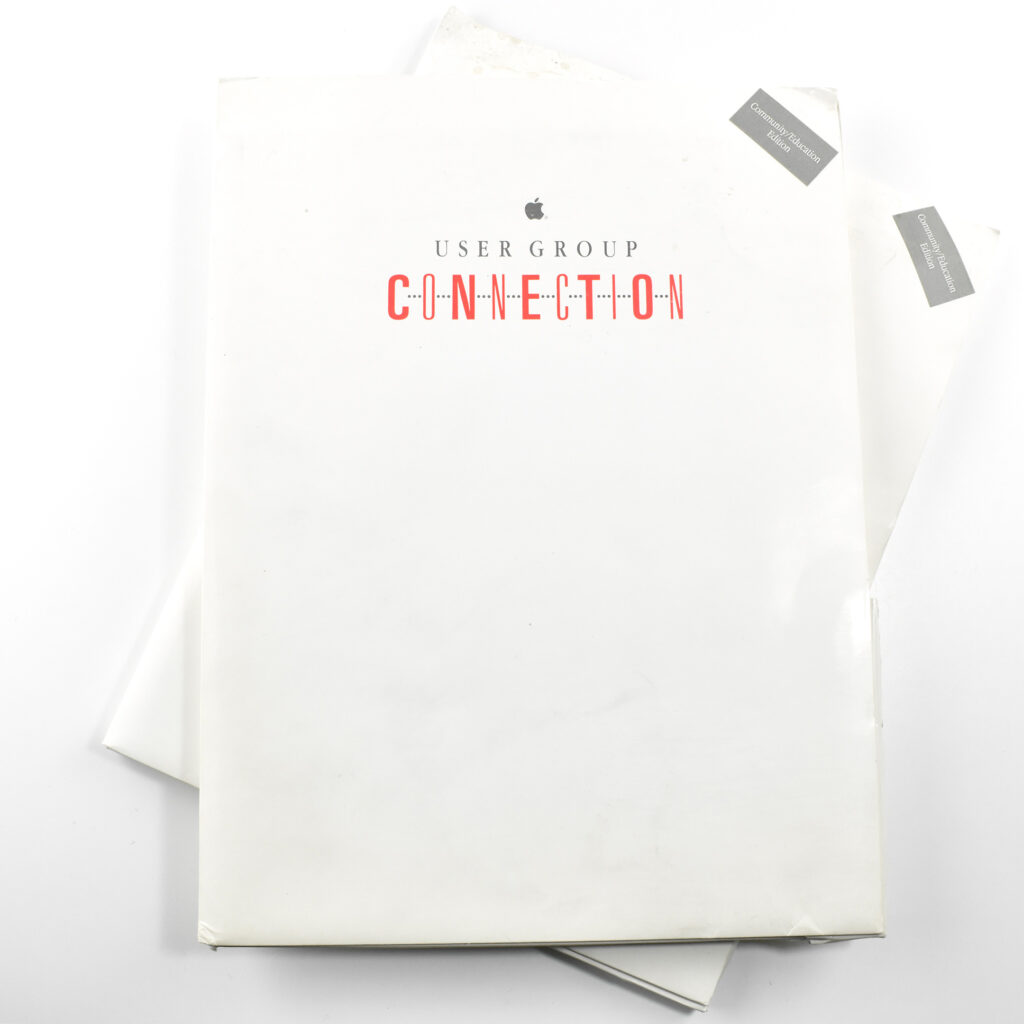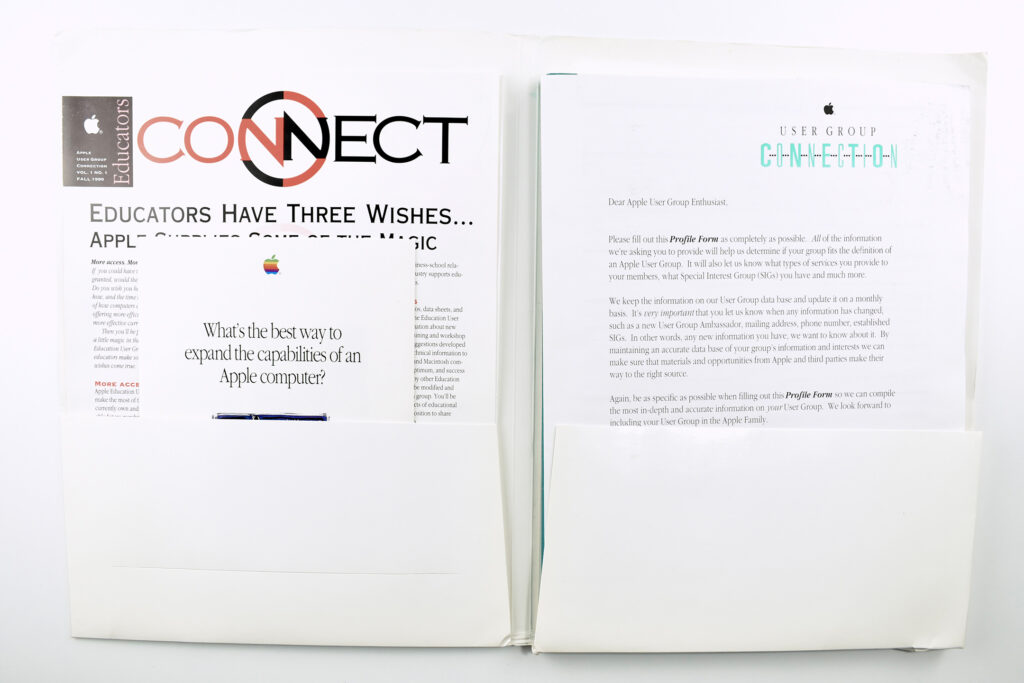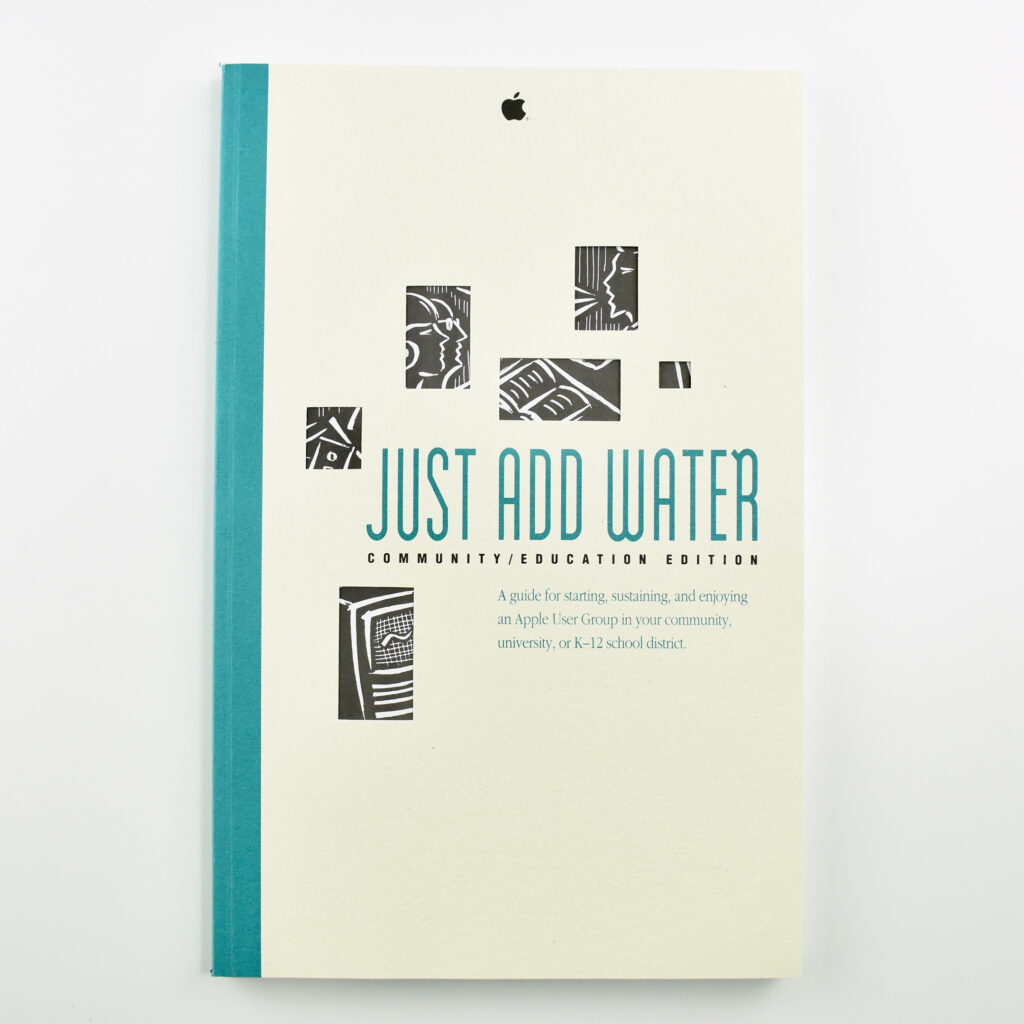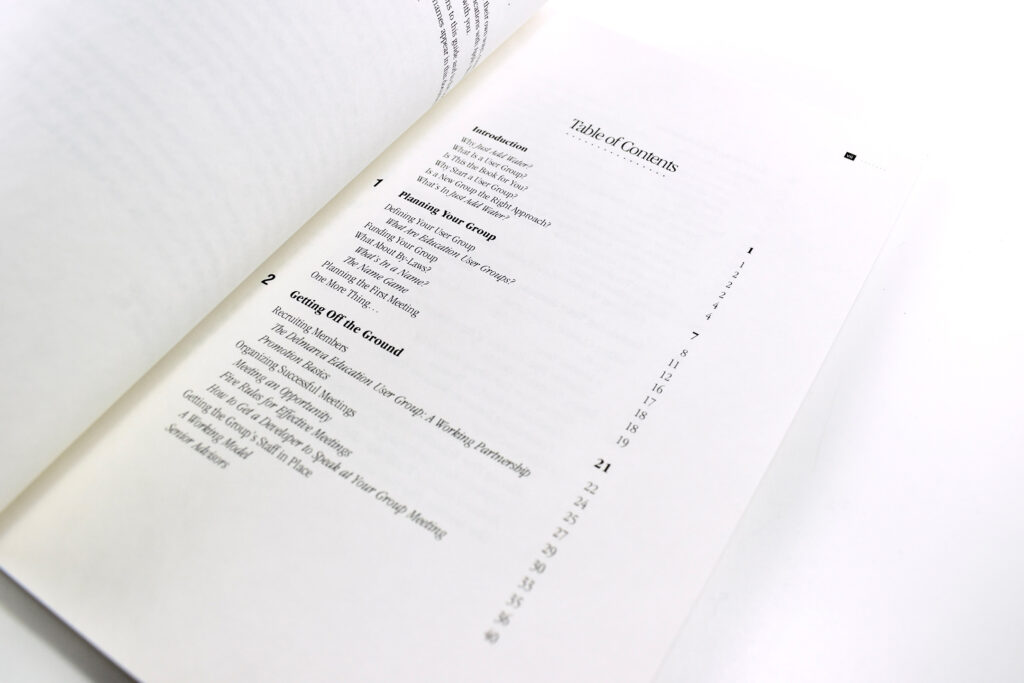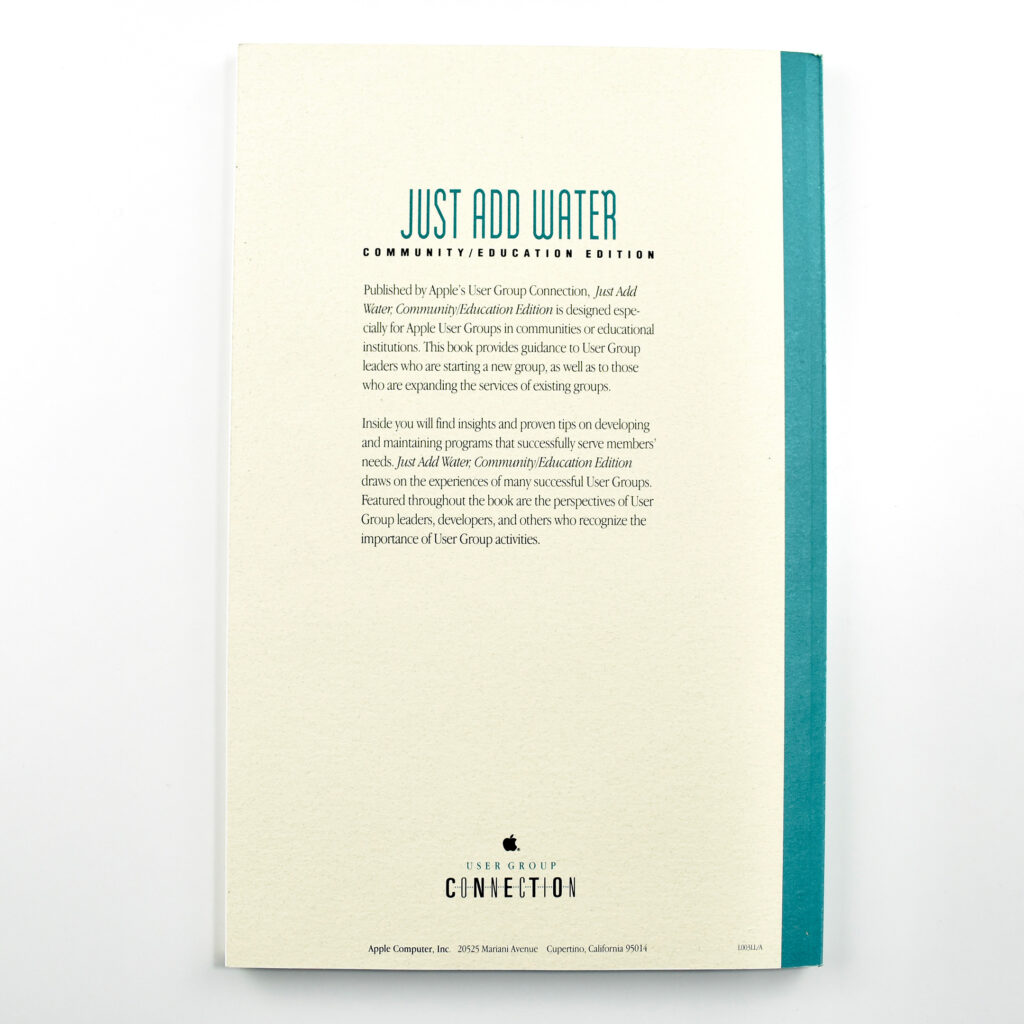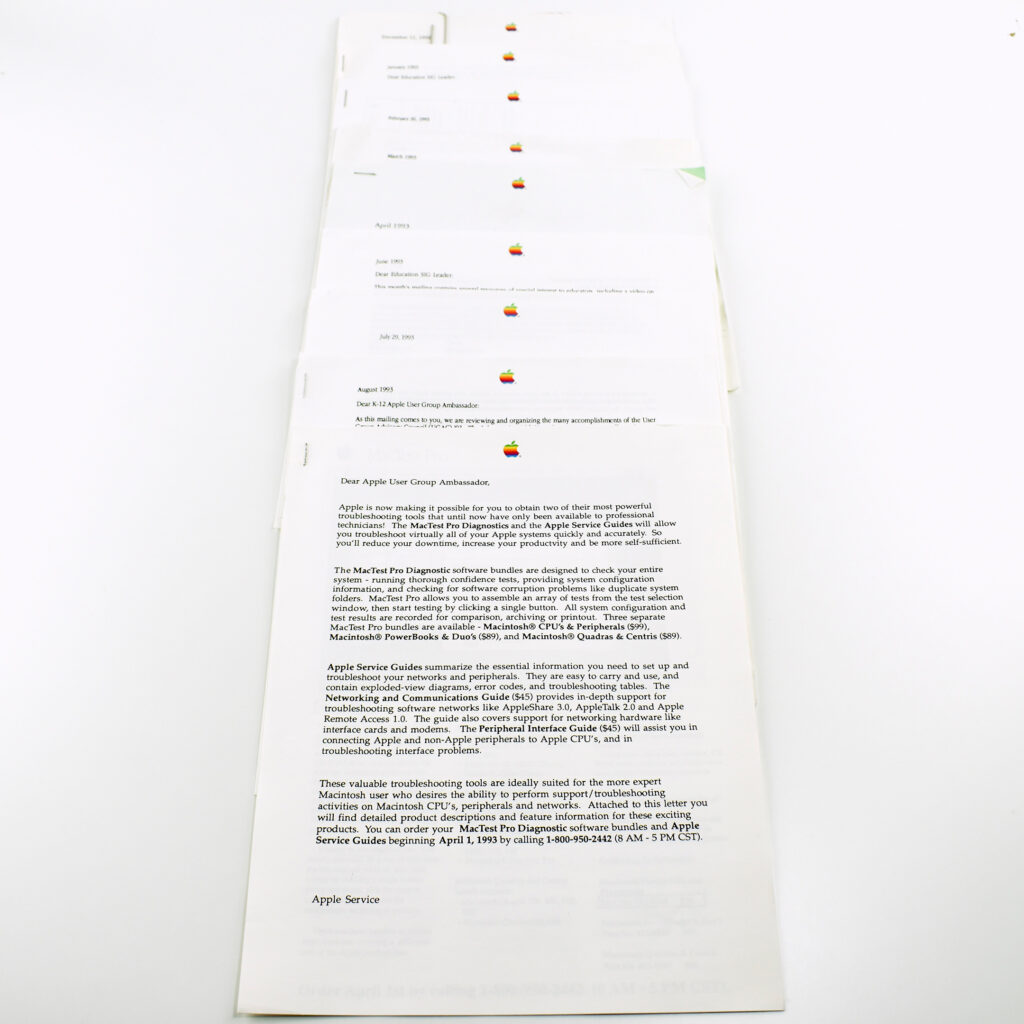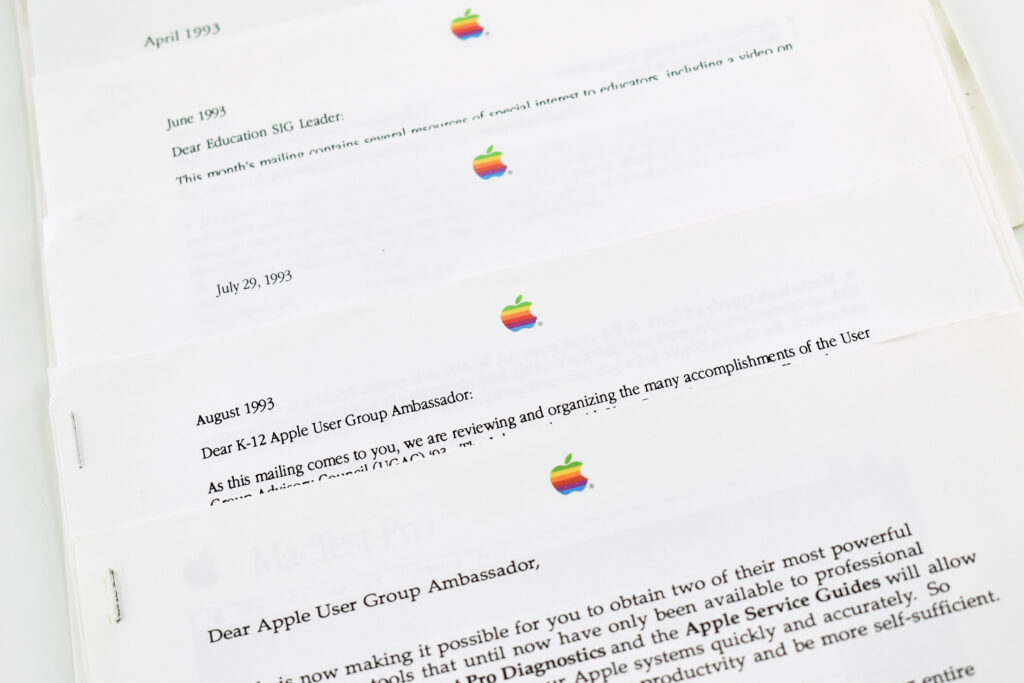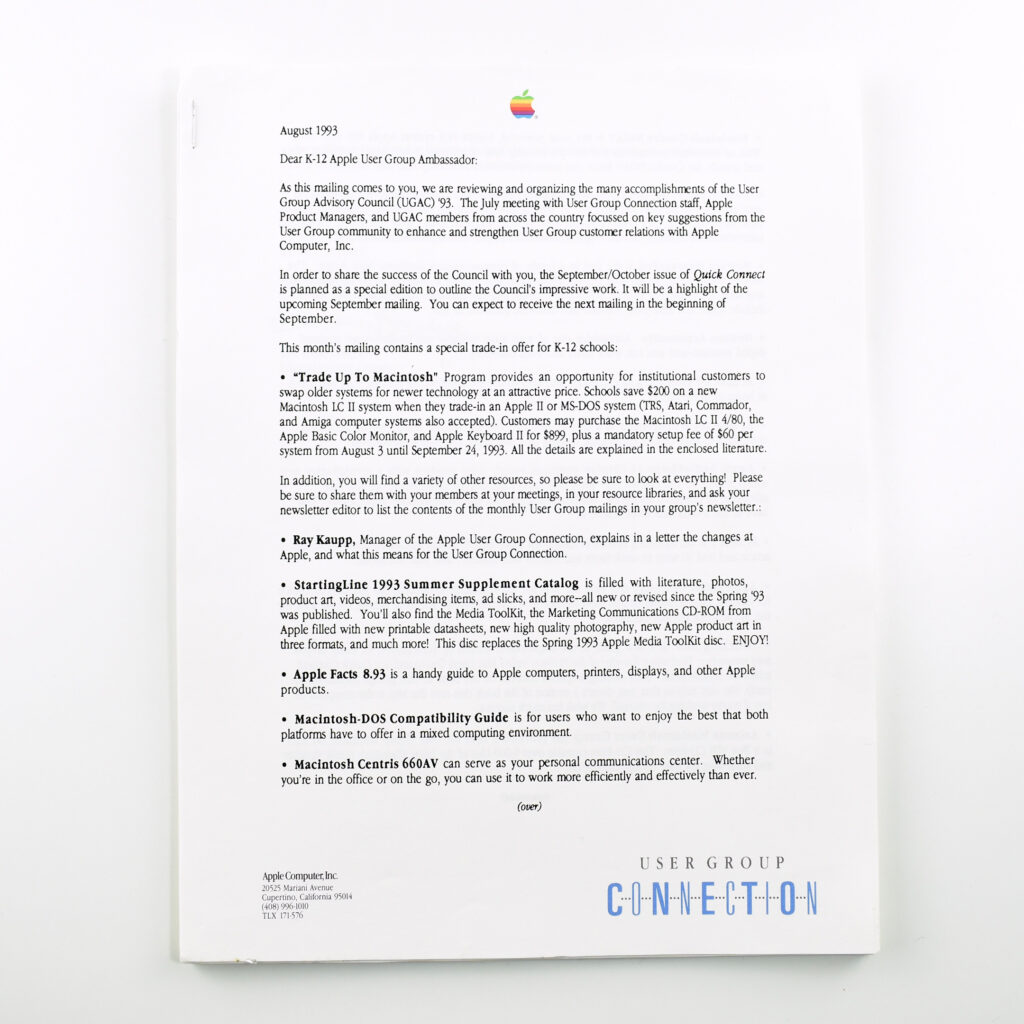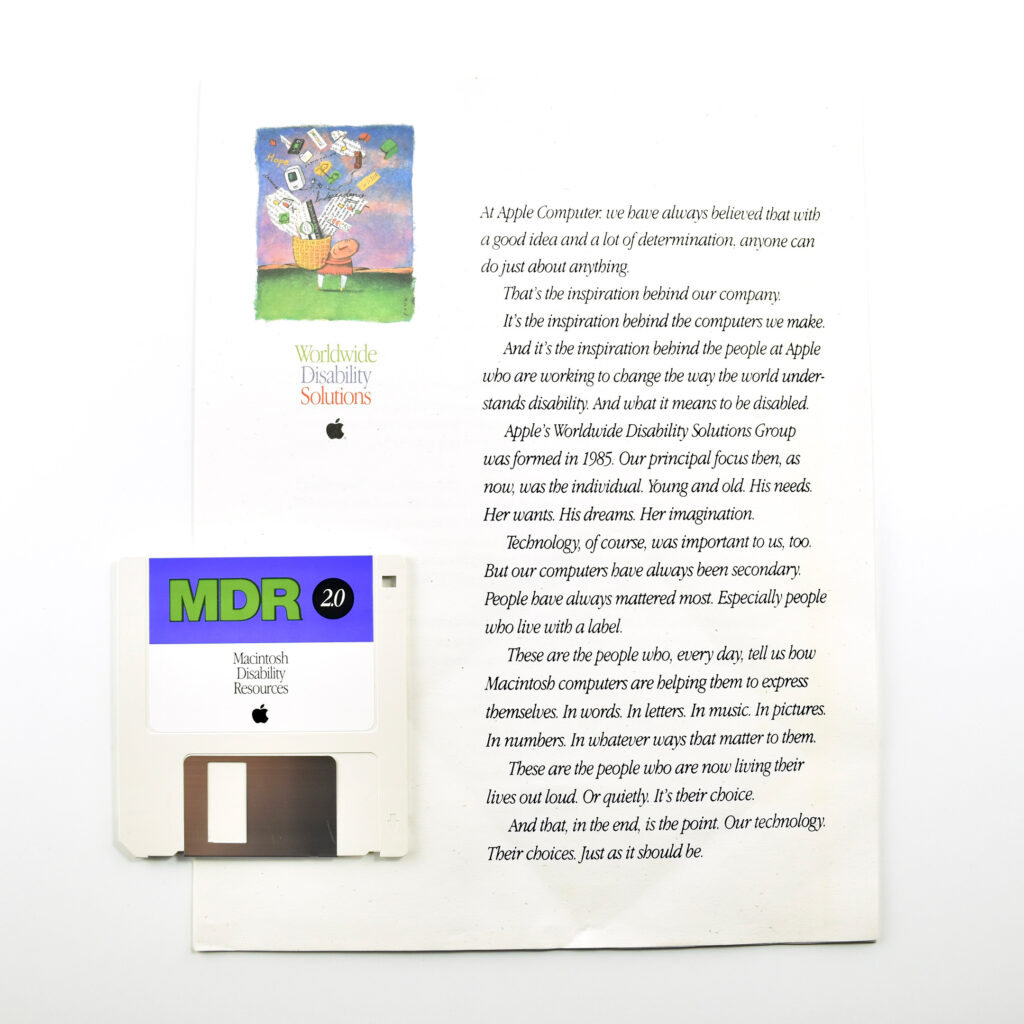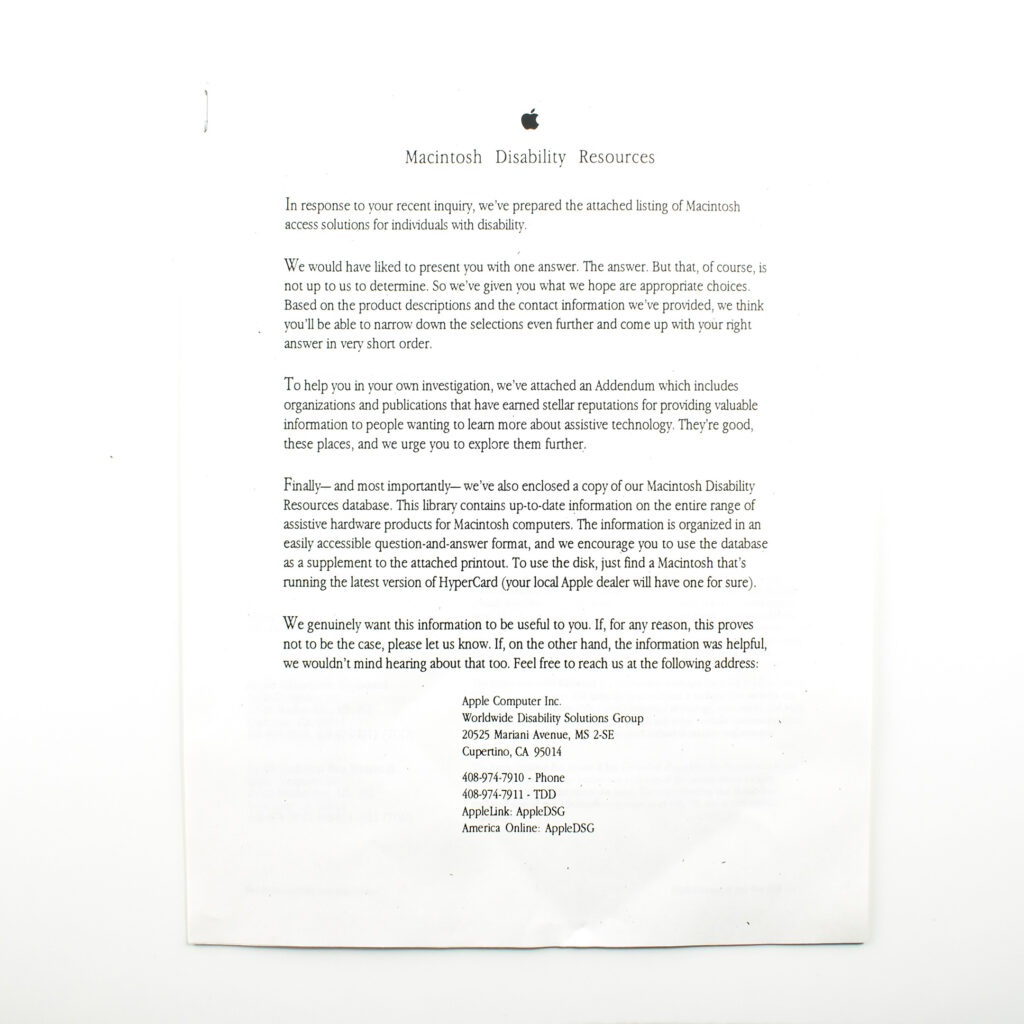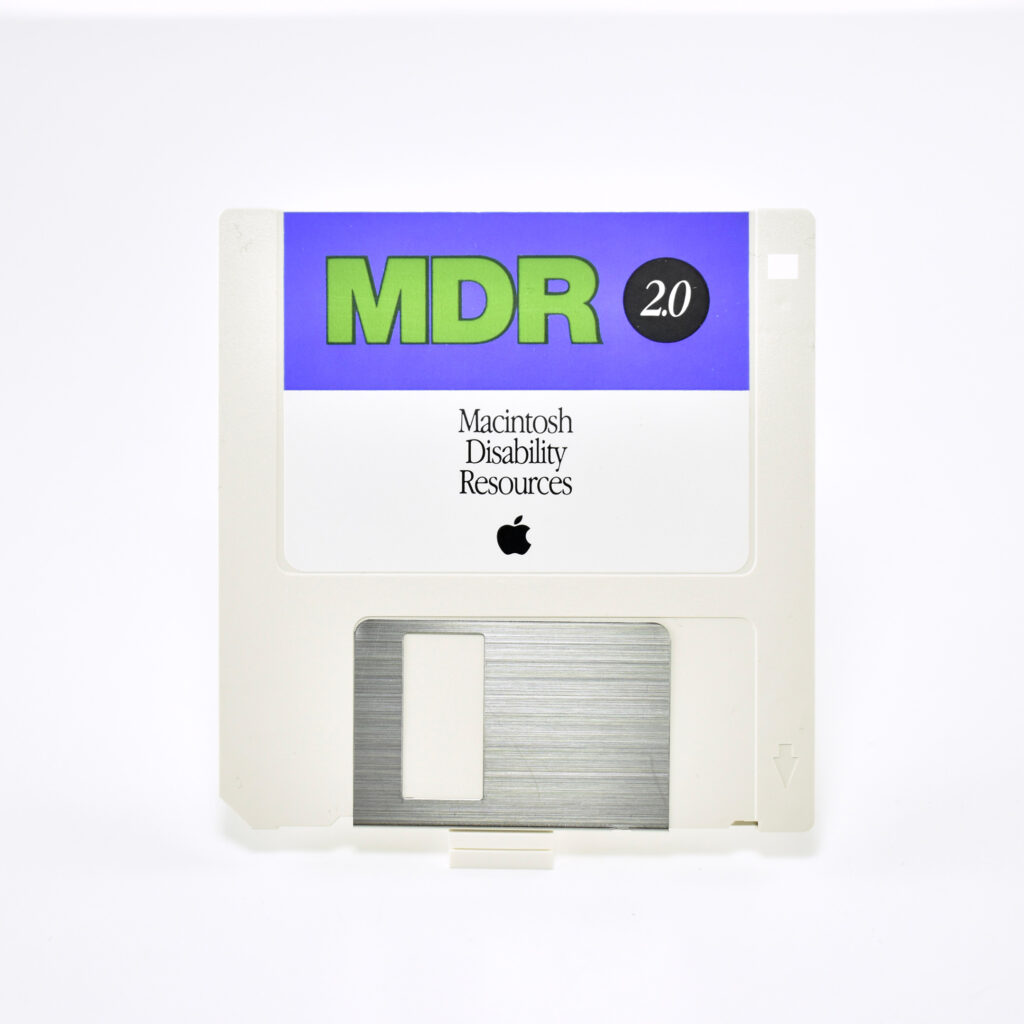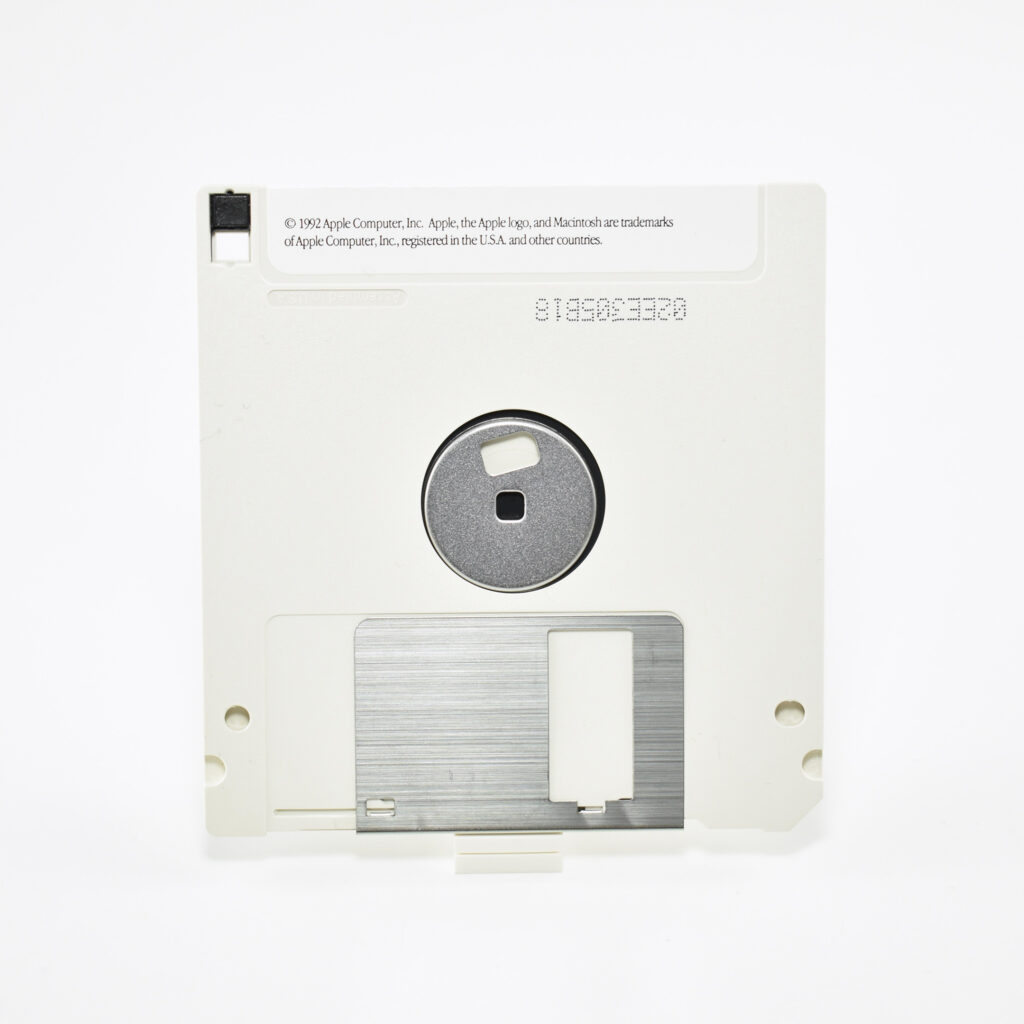These two folders are printed with a logotype for the Apple User Group Connection program. Both include stickers that indicate they are for the Community/Education Edition of the program.
The folders are made of heavy white card stock with a matte finish, measure 9 x 12 inches, and the unique design of the inside back pocket allowed the pocket to expand to about 3/8 inch.
The interior of the folders are filled with 8.5 x 11-inch printed materials, brochures, and a book. Both folders included letters from the Apple User Group Connection instructing groups leaders to participate in some aspect of the program.
The included paperback book is titled Just Add Water: Community/Education Edition. The book describes itself on the cover as “A guide for starting, sustaining, and enjoying an Apple User Group in your community, university, or K-12 school district.” The back cover includes, “Inside you will find insights and proven tips on developing and maintaining programs that successfully serve members’ needs. Just Add Water, Community/Education Edition draws on the experiences of many successful User Groups.”
The folders also include three different issues of Quick Connect: The Apple Newsletter for Apple User Groups. The issues contain articles on Apple products, Apple leadership, education, and enterprise. The three issues in this collection are from May/June 1993, January/February 1993, and March/April 1993.
In addition to the folders and their contents, this User Group Connection collection also includes nine letters addressed to user group leaders using various salutations (e.g., Dear Apple User Group Ambassador, Dear K–12 Apple User Group Ambassador, Dear Education SIG Leader, etc.) [SIG = Special Interest Group]. The letters describe new programs, features, products, and other information pertaining to the User Groups. This collection is dated between 1992–1993.
Source: Apple
